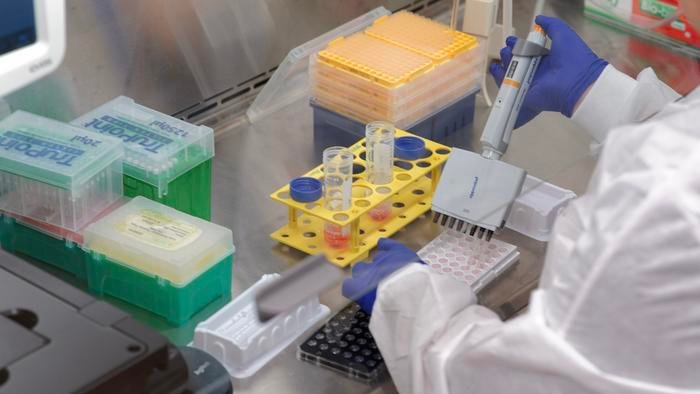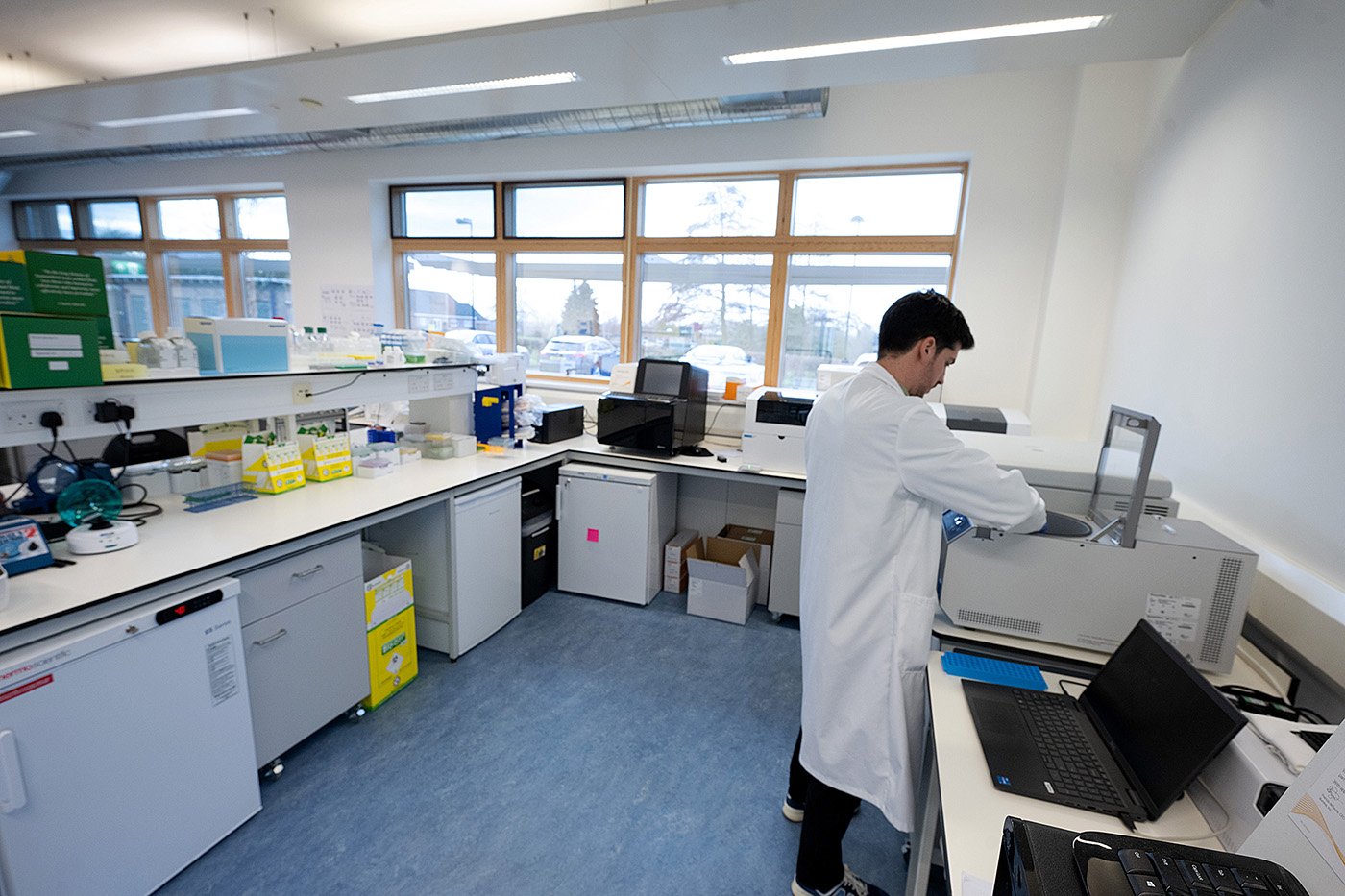Amyotrophic lateral sclerosis (ALS) is an incurable neurological disorder affecting motor neurons (MNs), which are nerve cells in the brain and spinal cord that control voluntary muscle movement and breathing. Many ALS clinical trials, including those testing promising drugs, have fallen short of expectations, commonly because the extent of the disease can vary, and not all patients respond the same way to medications.
Scientists at Case Western Reserve University now report new insights into one type of ALS, that may point towards a therapeutic approach for different types of the disorder. The team studied inducible pluripotent stem cell (iPSC)-motor neurons (MNs) carrying the P56S mutation in a protein called vesicle-associated membrane protein-associated protein-B (VAPB), which is responsible for a familial form of ALS. Their findings provided evidence that the mutation activates integrated stress response (ISR) via mitochondrial dysfunction in motor neurons, and also indicated that pharmacological inhibition of ISR using ISRIB helped to rescue ALS-associated phenotypes in both VAPB P56S and patient-derived IPSC-MNs.
Although the research centered on this rare form type of ALS, the investigators are optimistic the positive results could provide clues for potentially treating the devastating disorder more broadly. Study lead Helen Cristina Miranda, PhD, an associate professor of genetics and genome sciences at Case Western Reserve’s School of Medicine, suggested, “This work could help lay the foundation for genetically informed clinical trials.”
Miranda and colleagues reported on their study in EMBO Molecular Medicine, in a paper titled “Convergent activation of the integrated stress response and ER–mitochondria uncoupling in VAPB-associated ALS,” concluding, “This is the first study to mechanistically connect a known ALS mutation with ISR activation, highlighting the potential for mutation-specific therapeutic targeting and patient stratification in ISR-modulating clinical trials.”
Regenerative medicine—generating healthy cells to replace cells and repair tissues damaged by disease—is a particular strength at Case Western Reserve. Miranda’s lab studies neurodegenerative diseases, including ALS, using human stem cells.
“Amyotrophic lateral sclerosis (ALS), also known as Lou Gehrig’s disease, is the most common adult–onset motor neuron disease,” the authors wrote. There is currently no cure for the disorder, and currently approved therapies can only extend lifespan for a few months, “… partially due to a lack of understanding of disease pathogenesis,” the researchers continued.
The researchers studied an inherited type of ALS caused by a mutation (P56S) in the VAPB gene. This gene codes for a protein that helps link different parts of the cell so they can communicate and respond to stress. “This is especially important in nerve cells,” Miranda said. “When they break down, the neurons become more vulnerable to degeneration.”
The authors further wrote, “VAPB is an endoplasmic reticulum (ER) membrane-bound protein that tethers binding proteins and organelles to the ER…One of the main organelles that VAPB anchors to the ER is the mitochondria, and this binding is disrupted by the VAPB P56S mutation.”
For their reported study, the team generated iPSCs that stably expressed the VAPB P56S mutation, and differentiated these cells into motor neurons, to further study VAPB P56S-specific pathogenesis associated with ALS. They also created an iPSC line from ALS patient harboring the VAPB P56S mutation, allowing them to validate their findings in ALS-iPSC-derived motor neurons.
Through their studies the team discovered how the VAPB mutation can disrupt communication between key parts of the cell, specifically between the endoplasmic reticulum and mitochondria.
They found that this disruption leads to chronic activation of a protective mechanism called the ISR. Although initially helpful, sustained ISR activation reduces protein production and impairs cell survival, ultimately damaging motor neurons and contributing to this rare inherited form of ALS. The study, they said, “… provides the first mechanistic link between the ISR and the ALS-associated variant, VAPB P56S.”
The researchers in addition identified the ISR as a potential therapeutic target. “We also showed that blocking this stress response can reverse damage in the lab, a promising step toward future treatments,” Miranda said. “That’s a promising proof-of-concept for future therapeutic strategies.” The team further stated, “… we found ISRIB treatment rescues disease-relevant phenotypes caused by the VAPB P56S mutation, including the most clinically relevant, motor neuron electrophysiology. Thus, we suggest that dampening the ISR in motor neurons may be a valid therapeutic approach in patients with the VAPB P56S mutation.”
Several medications approved for ALS by FDA may prolong survival, slow the rate of decline or help manage symptoms. But there’s no known treatment that stops or reverses the disorder’s progression. While the team’s study focused on a particular rare type of ALS, the hope is to now expand the research to test whether the target might work on other forms of the disorder.
“It’s very rare, more prevalent in Brazil, but studying it gives us a window into how ALS motor neurons respond to stress,” Miranda said. “We are now testing ISR inhibitors in more complex neuromuscular models and exploring how this approach might benefit other ALS subtypes.” Interestingly, the team further noted in their report, “Prior investigations have implicated the ISR as a potential molecular mechanism associated with other variants of ALS.”
They concluded, “While further research is necessary to establish ISR involvement in other ALS subtypes and to advance therapeutic development, our results represent a significant step toward elucidating the molecular mechanisms underlying ALS and guiding the pursuit of effective therapeutic strategies.”
The post ALS Mutation Linked to Stress Response Points to Targeted Therapies appeared first on GEN – Genetic Engineering and Biotechnology News.



